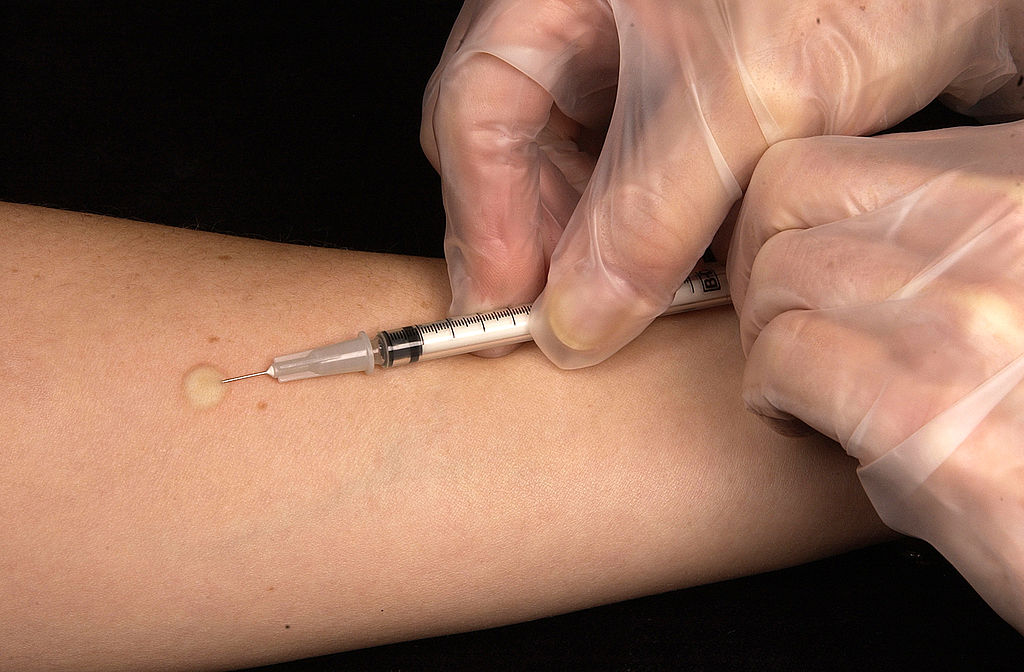Reduced quality of life
Interference and limitation in daily activities
Sleep disturbance
Economic cost
What is allergy?1
Allergy is a hypersensitivity or exaggerated response of the immune system to elements in our environment (for example: pollens, mites or some food) that do not pose any threat to us. This immune imbalance is associated with a series of inflammatory reactions in different organs and mucous membranes of the organism, which give rise to the different symptoms and signs of allergic diseases. There are immediate or delayed hypersensitivity reactions, being the immediate ones (mediated by the IgE antibody) the most common.
Within the different existing allergic pathologies, we speak of dermatitis when the inflammation affects the skin, conjunctivitis if it occurs in the ocular conjunctiva, rhinitis when it affects the nasal mucosa or asthma if the inflammation affects the bronchial tubes.
What causes allergy?2
Agents that cause allergic diseases are called allergens. These can be defined as harmless substances that induce hypersensitivity reactions in susceptible persons.
They cause diseases by inhalation and subsequent contact with the respiratory tract (asthma, rhinitis) and/or the ocular conjunctiva (conjunctivitis). The most common aeroallergens are pollens, fungal spores, mites and domestic animals.
They produce immediate reactions to their consumption, with the appearance of digestive, respiratory and/or skin symptoms. The most frequent in children are milk and egg proteins, while in adults, fruits and seafood predominate. Allergy to parasites contaminating food, such as allergy to Anisakis simplex larvae in fish, is also considered to be of food origin.
They produce cutaneous reactions on contact with the skin for a more or less prolonged period of time, manifesting themselves in the form of eczema or dermatitis. The most common contact allergens are metals (especially nickel) and some topical medications.
They are medicines, latex, hymenoptera venom (bees and wasps).
What types of allergy tests are there and how are they how are they performed?3
In clinical practice, the etiological diagnosis of allergy is made by means of the clinical history complemented by the allergological study. For the allergological study, skin tests and in vitro specific IgE determinations showing sensitization, i.e. the presence of specific IgE against the aeroallergen, are available.
Several types of skin test can be performed, depending on the allergic disease being treated and the type of allergic reaction (immediate or delayed) suspected.
Prick test
The most widely used and performed allergic test. It is used to investigate Immunoglobulin E (IgE) mediated allergy, also called immediate hypersensitivity reaction.
To perform the test, a drop of the allergenic extract to be tested is placed on the anterior aspect of the forearm, and a slight puncture is made with a lancet through the drop of extract and the outermost layer of the skin (epidermis). We will get the answer in a few minutes.
A variant of this test is the prick-prick: this consists of pricking the substance in its natural state (for example, a fruit) with a lancet, and then puncturing the skin with the same lancet.

Epicutaneous test
This is the main test when investigating certain allergic skin diseases, such as allergic contact dermatitis (allergic eczema), or certain drug reactions.
The substance is usually mixed with petroleum jelly and put in contact with the skin, by means of special dressings or polyethylene patches, keeping the substance in contact with the skin for a few days. After 48h the patches are lifted and a reaction is observed. At 96h, without having washed the area, a last reading will be made.

Intradermal test
This is the most costly and laborious test. For some allergens (hymenoptera venom, drugs or people with weak sensitivity) the prick test is not sufficient. In these cases, intradermal tests are recommended as they are more sensitive.
It consists of direct injection of the extract deeper, in the second layer of the patient's skin (dermis), and a reading is taken after 15-20 minutes. It is also useful to investigate late-type hypersensitivity, so a reading should be taken at 24, 48 and 96 hours.

1. Chivato Pérez T. What is allergy? What does Allergology study? In: José Manuel Zubeldia, Mª Luisa Baeza, Ignacio Jáuregui, Carlos J. Senent. Book of Allergenic Diseases of the BBVA Foundation. 1st ed. Bilbao: Editorial Nerea, S.A.; 2012. p. 21-30.
2. SEAIC: Spanish Society of Allergology and Clinical Immunology (cited October 10, 2010). Available at: https://
www.seaic.org/pacientes/conozca-sus-causas
3. Parra Arrondo A. Skin testing. In: José Manuel Zubeldia, Mª Luisa Baeza, Ignacio Jáuregui, Carlos J. Senent. Book of allergenic diseases of the BBVA foundation. 2nd ed. Bilbao: Editorial Nerea, S.A.; 2012. p. 365-370.








